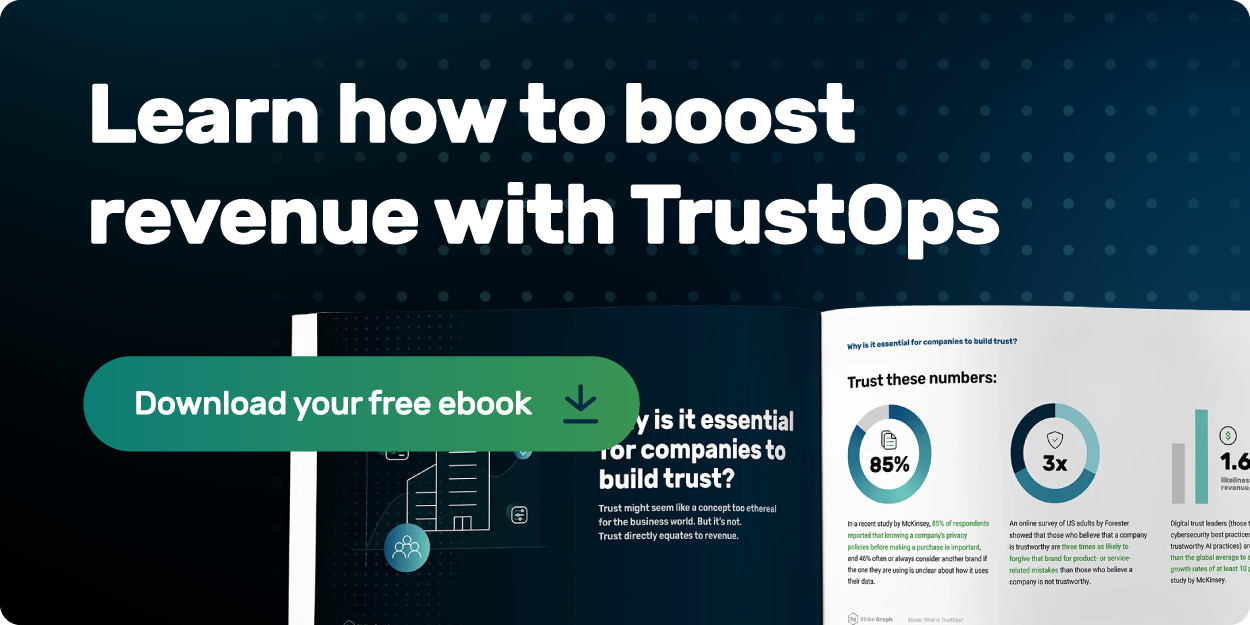With new security risks, changing regulatory requirements, and third-party vendors, navigating the security compliance landscape is more complex than ever. But, addressing these challenges is an important step for companies looking to build a reliable security program. Pursuing an agile and integrated governance, risk, and compliance (GRC) program enables companies to manage security risks and comply with regulatory requirements.
So, what does GRC mean, and why is it important to pursue GRC right now? Read along to find out more, and we’ll guide you through the GRC basics, advantages, and challenges, so you’ll be ready to get started.
What are governance, risk, and compliance?
The term “governance, risk, and compliance” refers to an information security model used to help organizations comply with regulatory requirements. The acronym, GRC, is commonly used to refer to this three-part program. Let’s review each section of GRC and explore how they relate to enhancing your information security management.
Governance
Governance is an organization’s approach to overseeing information security. The main objective of governance is to ensure information integrity, availability, and confidentiality. Leadership is responsible for safeguarding a company’s information security across the following components: strategy, implementation, operations, and monitoring. This includes complying with required security frameworks, aligning company strategy with security in mind, effectively implementing and overseeing risk mitigation, and communicating and monitoring changes to security protocols.
Risk
In the context of GRC, risk refers to information security risk management. This is the process of identifying existing and potential security risks, classifying them by the likelihood of their occurrence and potential business impact, as well as assessing gaps in security that need to be addressed. Thankfully, this process doesn’t need to be done manually. Strike Graph’s compliance operation and certification platform streamlines risk management by helping companies conduct thorough risk assessments and automatically assign adequate security controls.
Compliance
Compliance is often considered the final step in a GRC plan, but it’s actually an ongoing process. An organization can pursue compliance by establishing a GRC program that follows specific data and information security regulations. Then they typically must pass an audit to verify their security program’s effectiveness. After passing the audit, the organization is considered compliant. However, because security regulations are always changing and expanding, and because companies' risks change over time, organizations must continue to monitor and improve their security programs.
Now that you understand what a GRC program consists of, let’s explore the key drivers behind GRC implementation.

What are the key drivers behind GRC implementation?
New and updated regulatory requirements
There are several IT security frameworks that have become essential for most companies. And, security regulation continues to change and expand as technology evolves. Keeping up with those complexities can be difficult without an organized approach to information security management. Implementing a comprehensive GRC program ensures that companies stay abreast of any critical changes to security regulations that could impact them.
New risks and attack vectors
Changes to information security frameworks often occur as a response to identifying new risks or attack vectors. While complying with these changing regulations is mandatory, it’s also important for companies to be prepared internally for emerging risks specific to their unique business contexts. With a GRC plan in place, organizations can benefit from leadership guidance on prioritizing information security, as well as communicating protocols and workflows for keeping an organization’s data secure from new risks.
Complex third-party business relationships
It’s common practice for organizations to work with third-party vendors, but this also creates opportunities for additional security risks. With external parties potentially accessing company data, there must be protocols in place to prevent possible data breaches. As part of a GRC plan, organizations can use security questionnaires, also known as vendor assessments, to identify their third-party risk tolerance and ensure vendor data protection.
Data privacy and protection trends
In order to stay competitive, it’s important for organizations to illustrate that they take information security seriously. In addition to complying with required regulations, organizations must stay aware of global data privacy and protection trends. Implementing a GRC program including non-mandatory certifications or protocols helps to show customers that your company is on the cutting edge of information security.
What are the advantages of addressing governance, risk, and compliance?
Implementing a GRC program is a proven method for modern companies to effectively manage security risks. Pursuing an agile and integrated GRC program provides numerous benefits, including the following:
- Builds trust, which unlocks revenue and growth
- Enhances operational efficiency
- Avoids fines and reputation loss of security breaches and noncompliance
While there are many advantages to addressing GRC, there are also challenges that organizations may face along the way.
Top GRC challenges for companies
Creating a comprehensive GRC plan from scratch, or even revamping an existing plan, is a complex process. This is especially true for siloed organizations with little overarching visibility into operations and fragmented data management.
For a GRC plan to be effective, there must be alignment around the GRC framework. All departments of an organization and their data to be should be incorporated. This alignment is also necessary for addressing changes in regulations or leadership. If a GRC plan is not cohesive and flexible enough to adapt to a fast-changing business environment, it will not be effective in the long run.
Lastly, communication can pose a problem for companies implementing a new or improved GRC program. Leadership sets the tone for this transformation, and clear messaging and transparency are essential to creating a culture of compliance within the company.
How Strike Graph can help you with governance, risk, and compliance
Traditionally, companies have had to hire multiple security vendors to create, operate, and certify their GRC plans. The problem with that is the more consultants, testers, and auditors you need, the more money and time you’re forced to shell out.
Strike Graph rejects that antiquated model. Our compliance operation and certification platform takes you from the very first stages of planning (or rethinking) your GRC plan all the way to certification — faster and more affordably than has ever been possible. Then, as you continue to grow, you can leverage the work you’ve already done to easily maintain your existing compliance status and achieve additional certifications.
.jpg?width=1448&height=726&name=Screen%20Shot%202023-02-09%20at%202.57.5-min%20(1).jpg)









